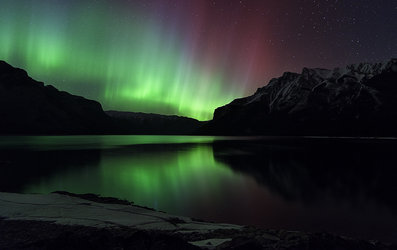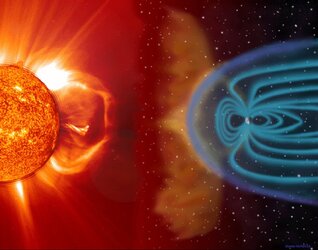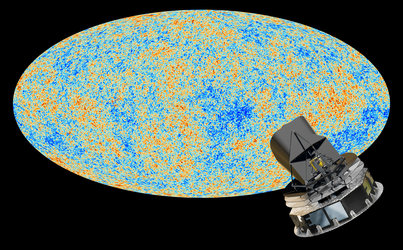Cluster listens to the sounds of Earth
The first thing an alien race is likely to hear from Earth is chirps and whistles, a bit like R2-D2, the robot from Star Wars. In reality, they are the sounds that accompany the aurora. Now ESA’s Cluster mission is showing scientists how to understand this emission and, in the future, search for alien worlds by listening for their sounds.
Scientists call this radio emission the Auroral Kilometric Radiation (AKR). It is generated high above the Earth, by the same shaft of solar particles that then causes an aurora to light the sky beneath. For decades, astronomers had assumed that these radio waves travelled out into space in an ever-widening cone, rather like light emitted from a torch. Thanks to Cluster, astronomers now know this is not true.
By analysing
“We can now determine exactly where the emission is coming from,” says Robert Mutel, University of Iowa, who conducted the three-year study with colleagues. For each of the AKR bursts they analysed, the astronomers pinpointed its point of origin to regions in Earth’s magnetic field just a few tens of kilometres in size. These were located a few thousand kilometres above where the light of the aurora is formed.
“This result was only possible because of the Cluster mission’s four spacecraft,” says Mutel. Consisting of four nearly identical spacecraft flying in formation, Cluster allowed the scientists to precisely time when the AKR washed over each of the satellites. Using this information, the scientists triangulated the points of origin, in a similar way to the way GPS navigation works.
ESA’s Cluster mission is showing scientists how to understand this emission and, in the future, search for alien worlds by listening for their chirps and whistles.
AKR was discovered by satellites in the early 1970s. It is blocked from reaching the ground by the ionosphere, the upper reaches of Earth’s atmosphere. This is just as well because otherwise it would overwhelm the transmissions from all our radio stations. It is 10 000 times more intense than even the strongest military radar signal. “Whenever you have aurora, you get AKR,” says Mutel. That includes aurorae on other planets, too. Visiting spacecraft have seen aurorae and detected AKR on Jupiter and Saturn, the two largest gas giants in our Solar System.
Not only will this new understanding of how the AKR is beamed into space help astronomers understand the magnetic environment of those gas worlds, it will also help them search for similar planets around other stars.
Although looking for AKR from extrasolar planets will require much larger radio telescopes than are currently available, these instruments are on the drawing boards. Once these planets have been identified, the AKR can be monitored for how it winks on and off, allowing astronomers to calculate how long the planet takes to rotate.
It also provides new routes of investigation into the magnetic fields of other stars, many of which have magnetic fields thousands of times stronger than the Sun. They too, will produce radiation similar to AKR and these can be monitored.
The result is a major scientific breakthrough that gives astronomers a new tool with which to investigate both planets and stars.
Notes for Editors:
Cluster multi-spacecraft determination of AKR angular beaming by R. Mutel, I. Christopher and J. Pickett is published in Geophysical Research Letters.
The data used in the study was collected by the NASA Wide Band (WBD) instrument flying onboard the four Cluster spacecraft.
For more information:
Robert Mutel, University of Iowa
Email: robert-mutel @ uiowa.edu
Philippe Escoubet, ESA Cluster Project Scientist
Email: philippe.escoubet @ esa.int















 Germany
Germany
 Austria
Austria
 Belgium
Belgium
 Denmark
Denmark
 Spain
Spain
 Estonia
Estonia
 Finland
Finland
 France
France
 Greece
Greece
 Hungary
Hungary
 Ireland
Ireland
 Italy
Italy
 Luxembourg
Luxembourg
 Norway
Norway
 The Netherlands
The Netherlands
 Poland
Poland
 Portugal
Portugal
 Czechia
Czechia
 Romania
Romania
 United Kingdom
United Kingdom
 Slovenia
Slovenia
 Sweden
Sweden
 Switzerland
Switzerland



































